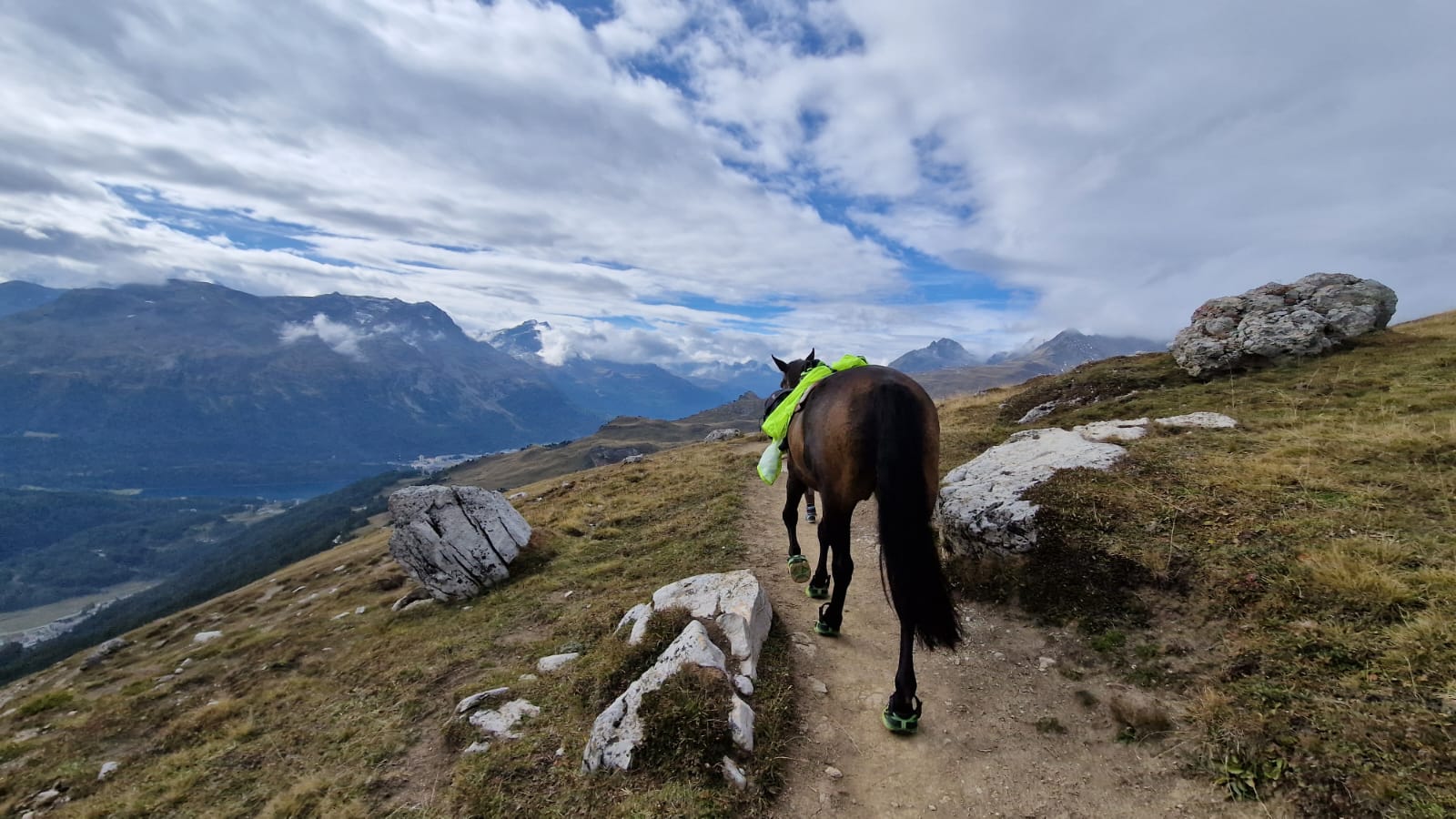FIND THE PERFECT fit
Discover the Swiss Galoppers Hoof Boot That’s Right for Your Horse
At Swiss Galoppers, helping you find the right hoof boot for your horse is our top priority. Every horse has unique hoof shapes and needs, which is why our hoof boots come in various sizes and models designed to provide an ideal fit, superior comfort, and long-lasting protection.
To help you find the right model, we’ve created a simple step-by-step wizard. In just a few clicks, you’ll receive a personalized recommendation based on your horse and your riding goals:
- Step 1: Select how you plan to use the boots—trail riding, sport, rehabilitation, or everyday use (multiple options possible).
- Step 2: Identify your horse’s hoof shape.
- Step 3: Measure the front, back, or both pairs of hooves. You’ll receive clear guidance to ensure accurate sizing.
Need help with measuring? Click here to open our Hoof Measurement Guide.
Once you’re ready, simply fill out the wizard below to discover which Swiss Galoppers hoof boot is the best fit for your horse.
Step 1: What do you need hoof boots for?
Please check the appropriate box
Swiss Galoppers are primarily riding boots for leisure riders who enjoy riding on differenthere terrains and prefer to avoid shoeing.
Thanks to their high comfort, shock-absorbing, and durable sole, Swiss Galoppers are perfect for trail riding—allowing you to travel for hours with stability and enjoyment.
Driving with Swiss Galoppers is safe with a proper fit. They are particularly popular for their shock-absorbing and durable soles.
For disciplines such as endurance riding, Swiss Galoppers are suitable up to a certain level. At higher levels, riders usually switch to shoeing.
Thanks to the comfort sole, Swiss Galoppers are suitable during and after the transition, as well as after illness and arthritis. However, they are not 24-hour therapeutic boots!
Swiss Galoppers are not suitable for dressage, show jumping, military sports/eventing. The boots are designed for leisure activities and are therefore not recommended for equestrian sports!
Step 2: What is your horse’s hoof shape?
Low to Normal Heels
For oval to round hooves with low heels, the “SG” is suitable.

Pronounced Bulbs
For oval to round hooves with pronounced bulbs, the “SG-L” is suitable.

High Heels
For oval to round hooves with high heels, the “SG-L” is suitable.

Swiss Galoppers are only partially suitable for asymmetrical hooves.

Swiss Galoppers are only partially suitable for long hooves with flat heels.

Swiss Galoppers are only partially suitable for steep walls and/or club feet.

Step 3: Enter Size
The optimal fit of the hoof boots requires regular hoof care. We recommend a trimming interval of 6–8 weeks, depending on individual hoof growth.
To ensure an optimal fit, hooves should be measured no later than 14 days after the last trimming.
Please enter each hoof individually. A guide on how to measure hoof width, length (including bulbs), and height can be found
here.

The front hooves usually differ in size from the back hooves. Please check whether the sizes match for both front and back hooves.
Do you want to provide the measurements in millimeters or in inches?
Front Left
Front Right
Back Left
Back Right
If the last hoof trimming was more than 4 weeks ago, the calculation may vary significantly. We recommend waiting for the next hoof trimming and measuring again immediately afterward.
Order Online
shop hoof boots here
Once you’ve used the fitting wizard and found the perfect model, you can easily shop and order your Swiss Galoppers hoof boots online. Our secure checkout guarantees your boots will be delivered directly to your doorstep without hassle.
Buy & test in store
Experience the Fit Before You Commit
We understand the importance of comfort and fit. That’s why we offer the chance to find the right hoof boot by testing our products at select partner stores. Experience the fit, comfort, and function firsthand to make the best choice for your horse.
Choose between our standard fit model and the flexible L-model, which features interchangeable extensions for a more customized fit. Both are designed to give your horse the freedom to move naturally while ensuring maximum comfort.


